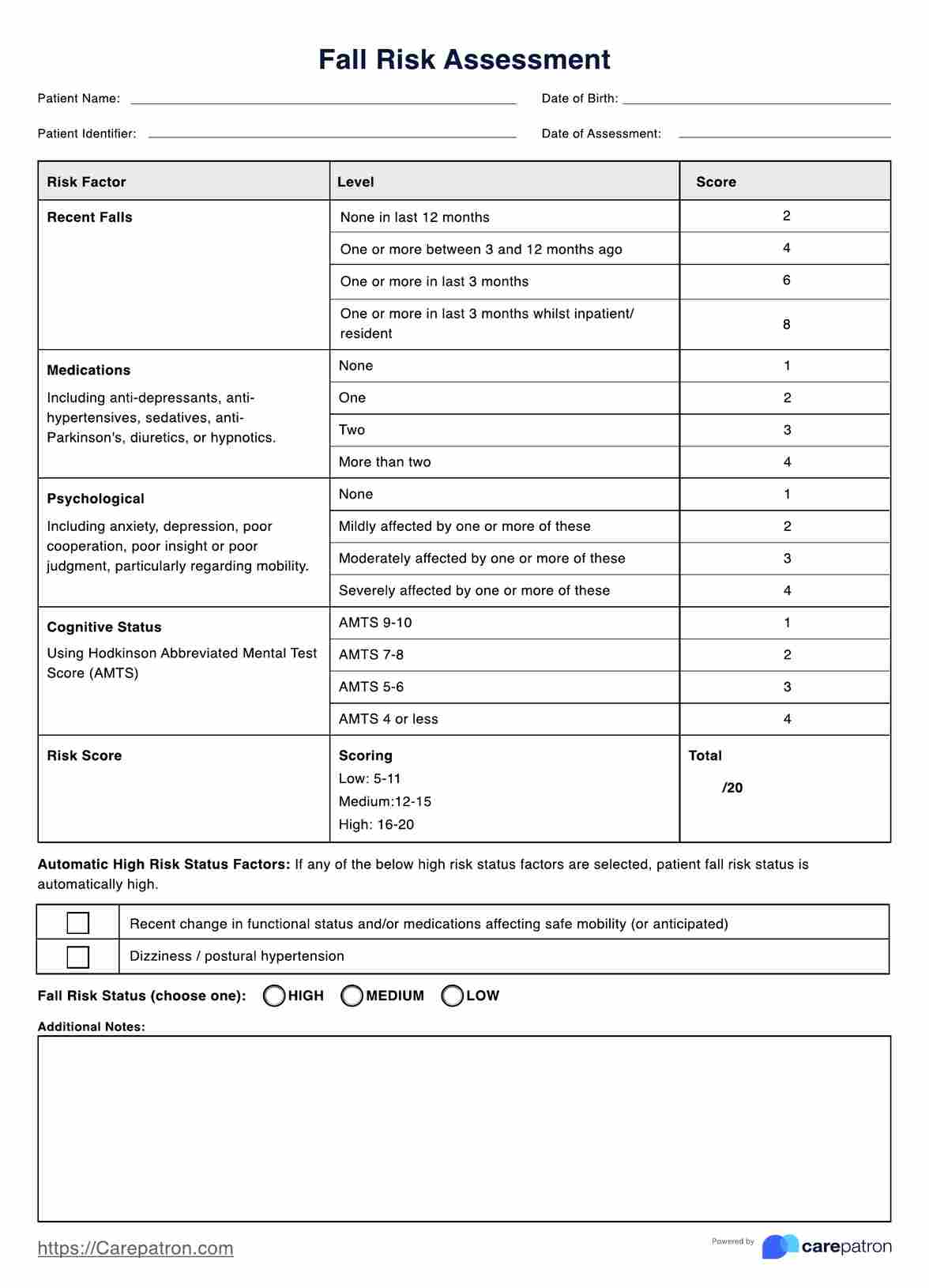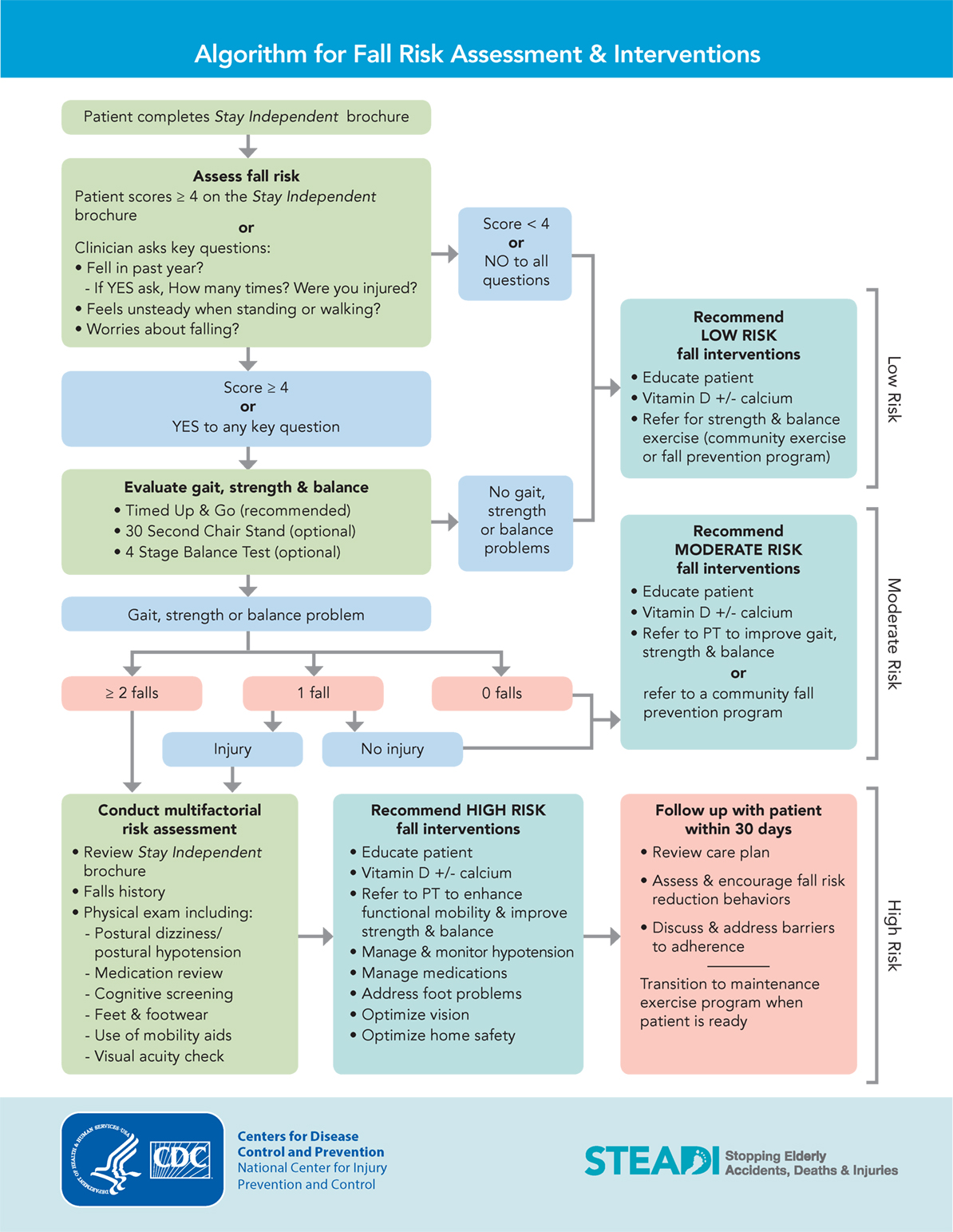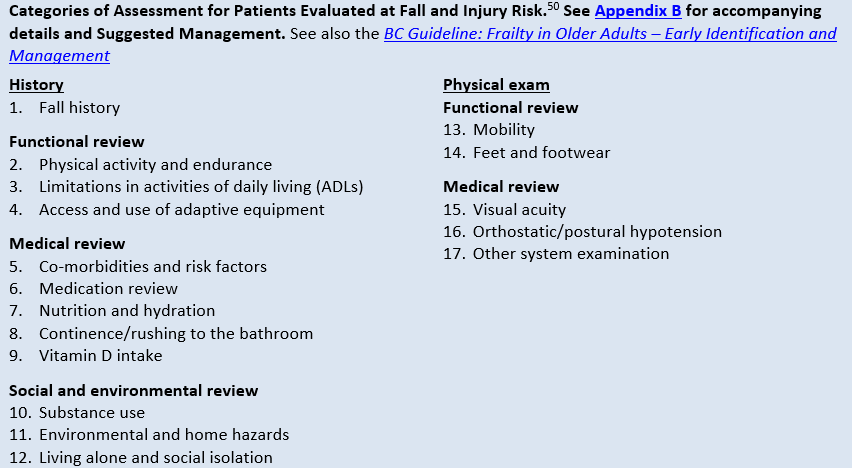Dementia Fall Risk Can Be Fun For Everyone
Table of ContentsThe Buzz on Dementia Fall RiskThings about Dementia Fall RiskThe smart Trick of Dementia Fall Risk That Nobody is DiscussingDementia Fall Risk - The Facts
A loss threat evaluation checks to see just how most likely it is that you will drop. It is mainly provided for older adults. The analysis generally includes: This consists of a series of questions about your general health and wellness and if you have actually had previous drops or troubles with balance, standing, and/or strolling. These tools test your strength, equilibrium, and gait (the way you stroll).STEADI consists of screening, assessing, and treatment. Interventions are recommendations that might lower your danger of falling. STEADI includes three actions: you for your risk of dropping for your threat factors that can be improved to attempt to stop falls (for example, balance problems, damaged vision) to decrease your threat of falling by utilizing efficient methods (for instance, supplying education and sources), you may be asked a number of questions consisting of: Have you dropped in the previous year? Do you really feel unsteady when standing or walking? Are you fretted about dropping?, your copyright will certainly check your toughness, balance, and stride, using the following fall assessment tools: This test checks your stride.
If it takes you 12 seconds or more, it may mean you are at greater risk for a fall. This examination checks stamina and equilibrium.
Relocate one foot midway ahead, so the instep is touching the huge toe of your various other foot. Move one foot completely in front of the various other, so the toes are touching the heel of your various other foot.
Some Known Incorrect Statements About Dementia Fall Risk
Many drops happen as an outcome of multiple adding elements; as a result, taking care of the threat of falling begins with determining the elements that add to fall danger - Dementia Fall Risk. A few of one of the most appropriate danger variables include: Background of previous fallsChronic medical conditionsAcute illnessImpaired stride and equilibrium, lower extremity weaknessCognitive impairmentChanges in visionCertain risky medications and polypharmacyEnvironmental aspects can likewise raise the danger for drops, consisting of: Inadequate lightingUneven or damaged flooringWet or unsafe floorsMissing or harmed handrails and grab barsDamaged or improperly fitted devices, such as beds, wheelchairs, or walkersImproper usage of assistive devicesInadequate supervision of individuals staying in the NF, consisting of those that display hostile behaviorsA effective loss threat management program calls for a complete professional evaluation, with input from all participants of the interdisciplinary team

The treatment plan need to also consist of interventions that are system-based, such as those that promote a risk-free atmosphere (ideal lights, handrails, get hold of bars, and so on). The effectiveness of the treatments must be assessed periodically, and the treatment plan revised as needed to show you can find out more adjustments in the fall danger evaluation. Applying a fall threat management system making use of evidence-based best practice can minimize the occurrence of falls in the NF, while restricting the potential for fall-related injuries.
What Does Dementia Fall Risk Mean?
The AGS/BGS guideline recommends screening all adults aged 65 years and older for autumn risk yearly. This screening includes asking patients whether they have actually fallen 2 or more times in the previous year or looked for clinical attention for a fall, or, if they have not dropped, whether they really feel unsteady when strolling.
People that have actually fallen when without injury needs to have their balance and gait assessed; those with stride or equilibrium irregularities must obtain extra assessment. A background of 1 loss without injury and without gait or equilibrium issues does not call for more analysis beyond ongoing annual fall threat testing. Dementia Fall Risk. An autumn threat evaluation is needed as component of the Welcome to Medicare exam

Examine This Report about Dementia Fall Risk
Documenting a falls history is among the quality signs for fall prevention and monitoring. An essential component of danger analysis is a medication evaluation. Several classes of drugs boost fall risk (Table 2). copyright drugs particularly are independent forecasters of drops. These drugs have a tendency to be sedating, modify the sensorium, and harm equilibrium and gait.
Postural hypotension can frequently be eased by minimizing the dose of blood pressurelowering drugs and/or stopping medicines that have orthostatic hypotension as a side effect. Use of above-the-knee assistance tube and sleeping with the head of the bed raised might likewise decrease postural reductions in high blood pressure. The preferred aspects of a fall-focused health examination are received Box 1.

A TUG time greater than or equal to 12 seconds recommends high loss danger. Being unable to stand up from a chair of knee elevation without making use of one's arms indicates enhanced loss danger.